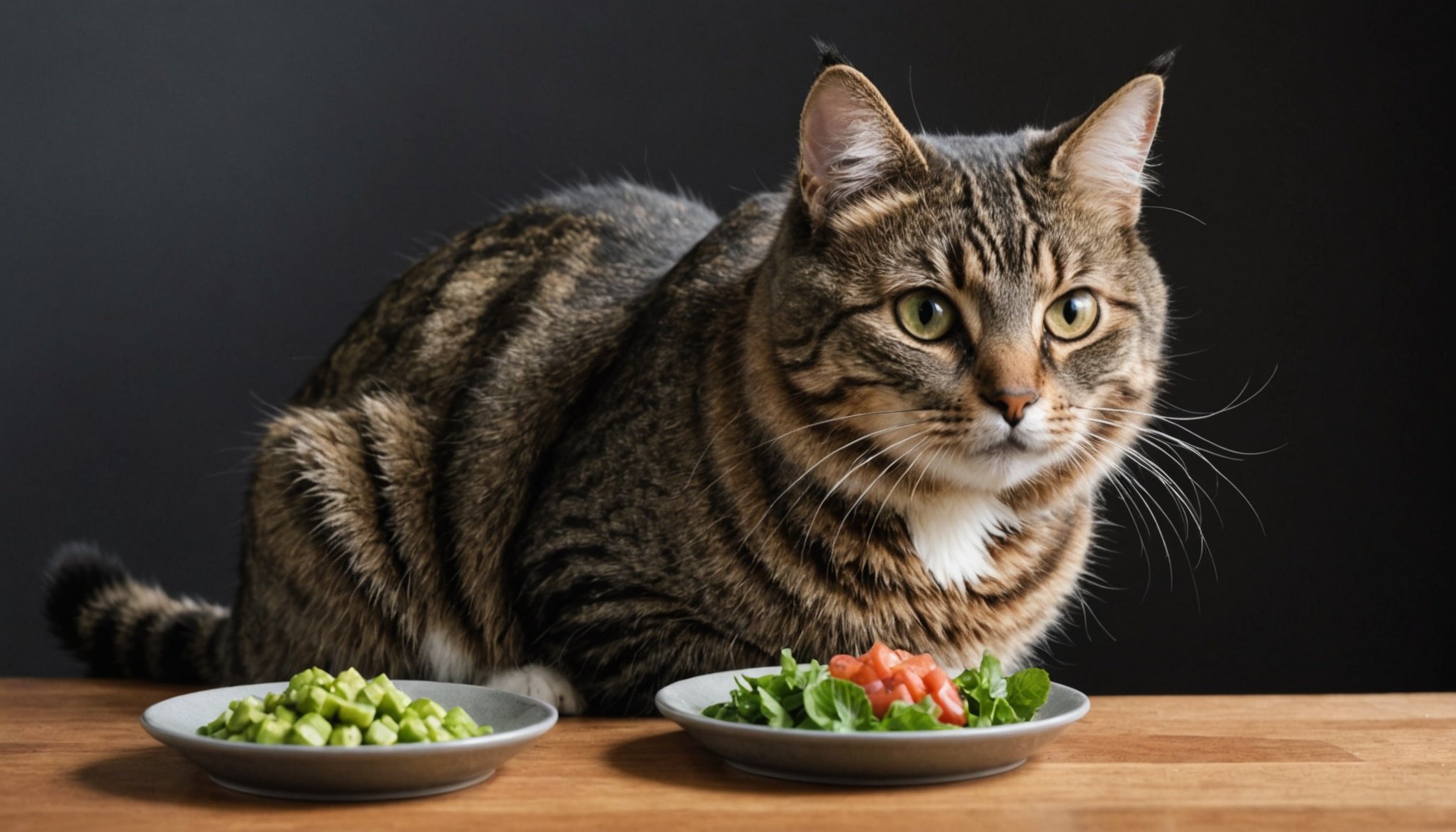Understanding the Raw Food Diet for Cats
The raw food diet for cats is an approach aimed at mimicking what felines would naturally consume in the wild. This diet primarily consists of uncooked meats, bones, and organs, providing the nutrients needed for a cat’s optimal health. Transitioning to such a diet may offer several benefits of raw feeding, aligning closely with a cat’s instinctual dietary needs.
The nutritional benefits of adopting a raw food diet for cats include improved digestion, healthier coats, and increased energy levels. Cats, being obligate carnivores, require a diet high in protein and sufficient in taurine, an essential amino acid found abundantly in raw meats. Unlike processed foods, raw feeding can potentially offer these nutrients in more bio-appropriate forms.
This might interest you : Expert tips for smoothly introducing your senior cat to a playful new kitten
Despite its advantages, some common misconceptions about raw feeding still exist. One such misconception is that raw diets are inherently less safe for cats due to the risk of bacterial contamination. However, with proper handling and preparation, these risks can be minimized. Moreover, it’s often believed that raw food might be nutritionally incomplete; however, when well-planned, raw diets can meet all of a cat’s nutritional requirements. Understanding these aspects can empower pet owners to make informed decisions for their feline companions.
Health Benefits of a Raw Food Diet
Understanding the health benefits of a raw food diet is crucial for those considering this path for their felines. One noticeable improvement is in coat health and energy levels. Many cat owners report shinier, less-shedding fur and more energetic behaviour when their pets switch to a raw diet. These raw food advantages align with the natural diet of cats, enhancing overall wellness.
Also to discover : Preparing your cat for a new arrival: expert tips for a smooth transition with your baby
Moreover, a raw food diet can significantly reduce allergies and digestive issues. Cats on this diet often exhibit fewer allergic reactions, which can be linked to common allergens found in processed foods. Additionally, improved digestion is frequently reported, as a natural diet harmonizes with the cat’s digestive system. These advantages make a strong case for raw feeding.
Long-term, the health benefits of a raw diet can be astounding. Observations indicate that raw-fed cats can enjoy longevity and vitality well beyond their processed-food counterparts. Owners have noted fewer vet visits and a robust immune response in their cats due to the nutrient-rich, natural diet. Thus, transitioning to raw feeding provides myriad benefits, positively impacting your cat’s wellness and quality of life.
Step-by-Step Transition Plan
Understanding how to effectively switch your cat to a raw food diet can significantly impact the success of transitioning. A gradual approach paired with precise feeding guidelines makes the transition smoother for both you and your feline friend.
Preparing for the Transition
First, consult your veterinarian to address any health considerations specific to your cat. A vet’s advice is invaluable in ensuring that your cat’s nutritional needs are met when embarking on this new diet journey.
Creating a Balanced Raw Food Plan
When crafting a raw food plan, ensure it includes key nutrients such as taurine, calcium, and the right balance of proteins, fats, and carbohydrates. It’s essential to tailor the meal plan to your cat’s specific dietary requirements to maintain optimal health.
Monitoring Your Cat’s Adjustment
Closely monitor your cat’s behavioural and health changes during transition and make adjustments as needed. This may include altering portion sizes or food types based on your cat’s response. Adopting a raw diet is an ongoing process that requires attentive observation and willingness to adapt feeding strategies. Consistently checking your cat’s wellness ensures continued success with the transition.
Tips for Balancing Nutrition
Creating a balanced diet is essential to ensure cats receive all necessary nutrients for optimal health. Cats require vital nutrients like taurine, which is crucial for heart and eye health, alongside calcium, vitamins, and minerals. A raw diet naturally provides these but ensuring the right balance is important to meet their nutritional requirements.
Essential Nutrients
A cat’s cat diet must include adequate amounts of protein, fats, and limited carbohydrates. Protein is the powerhouse for a cat’s diet, and raw meats serve as a great source. Fats are essential for energy but should be controlled to prevent obesity.
The Role of Supplements
While raw diets are nutrient-rich, adding supplements can fill nutritional gaps. Omega-3 fatty acids, like fish oil, can enhance coat health, while vitamin E and taurine are vital for complete nutrition. Supplements should be used sparingly and based on your cat’s individual needs, ensuring they don’t over-supplement.
Ensuring Variety and Balance in Meals
Variety in a cat’s diet not only prevents boredom but also helps evade nutrient deficiencies. Incorporating different protein sources such as chicken, beef, and fish can balance meals. Adjust portion sizes based on your cat’s activity level and health status to maintain an ideal body weight.
Potential Challenges in Transitioning
Switching to a raw food diet can come with its share of challenges. One primary issue cat owners face is their pet’s reluctance to try raw food. It’s crucial to identify the causes, such as unfamiliar textures or flavours, and introduce new foods slowly. Mixing a small amount with their current diet can help ease the transition.
Digestive upset is another possible challenge. While transitioning, some cats may experience minor digestive changes. Addressing this involves monitoring portion sizes and ensuring foods are fresh and safe. Gradual changes allow their systems to adjust without distress.
Picky eaters present unique challenges. Encouraging acceptance requires patience, persistence, and sometimes a bit of creativity. Goldening food with enticing smells like fish oil, or trying different protein sources, can stimulate interest.
Here are some practical tips for dealing with these challenges:
- Introduce new foods gradually: This helps prevent digestive upsets.
- Pay attention to hygiene: Ensure proper storage and handling of raw ingredients.
- Consult with a vet: Especially if challenges persist, professional advice can be invaluable.
Early troubleshooting and preparation can lead to a more successful diet transition.
Safety Concerns with Raw Feeding
When considering a raw food diet for cats, understanding food safety is paramount. It’s essential to source high-quality raw ingredients to reduce the risk of bacterial contamination. Opt for reputable suppliers who ensure their products are fresh and free from harmful pathogens.
Proper handling of raw meat is crucial in maintaining hygiene. Always wash your hands and any surfaces that come into contact with the meat to prevent cross-contamination. Using separate cutting boards for raw and cooked foods is a recommended practice. Additionally, promptly refrigerating or freezing raw foods helps preserve their nutritional value while deterring bacterial growth.
Preparing and storing raw food involves careful attention to detail. Store meats at temperatures below 40°F (4°C) and use them within recommended timeframes to ensure safety and freshness. Investing in a high-quality, airtight container can prolong the shelf life of your cat’s meals.
Understanding the risks associated with raw feeding is important, yet manageable with proper precautions. Despite common misconceptions, with responsible practices, raw feeding can be safe, offering numerous benefits for your cat’s health. Ensuring food safety through diligent practices ensures your feline friend receives a nutritious, worry-free diet.
Expert Insights and Personal Anecdotes
Exploring expert opinions on raw feeding provides valuable perspectives and guidelines. Veterinarians often emphasize the importance of a balanced approach to ensure cats receive all essential nutrients. They recommend regular health checks to monitor your pet’s condition and adjust diets as needed, tailored to individual requirements.
Personal experiences shed light on practical aspects of transitioning to a raw feeding routine. For instance, many pet owners recount initial challenges in adjusting their cats to new textures and tastes. However, persistent efforts and gradual transitions often lead to successful adaptation. These anecdotes highlight the importance of patience and a systematic approach.
Success stories abound among those who have transitioned to raw diets, frequently reporting improvements in their cats’ overall wellness. Stories include noticeable enhancements in coat texture and energy levels, which align with observations shared by other cat owners. Such outcomes emphasize the potential benefits of raw feeding.
However, real-life experiences also reveal common pitfalls, such as misconceptions about nutritional adequacy or safety concerns. Addressing these issues through informed practices and expert guidance can ensure a smooth transition. Leveraging shared knowledge can help pet owners avoid common mistakes and promote optimal health for their feline companions.
Expert Insights and Personal Anecdotes
Exploring expert opinions on raw feeding provides valuable insights into creating a successful diet for cats. Veterinarians stress the significance of a balanced approach to ensure all nutritional requirements are met. Regular health checks are advised to monitor your pet’s condition and make necessary dietary adjustments. These checks ensure the diet is tailored to individual needs, maintaining your cat’s wellness.
Personal experiences offer practical perspectives on the transition to a raw feeding regimen. Many pet owners share initial challenges, particularly with acceptance of new textures and flavours. However, consistent effort and gradual introductions often lead to success. Such anecdotes highlight the importance of patience and a methodical approach for effective transition.
Numerous success stories testify to the improvements seen in cats’ overall health, such as enhanced coat quality and increased energy. These outcomes align with widespread reports from other owners, emphasizing the potential benefits of raw feeding. Observations of fewer allergies and digestive issues further reinforce these advantages.
Nevertheless, common pitfalls exist, including concerns over nutritional completeness. Ensuring a diverse diet and engaging expert guidance can mitigate these issues. Drawing from shared knowledge helps cat owners make informed decisions, promoting their feline companions’ optimal health.
Frequently Asked Questions about Raw Feeding
Exploring common inquiries about raw feeding helps address concerns many cat owners share.
General Raw Feeding Questions
Why choose a raw food diet for my cat? A raw food diet aligns with cats’ natural dietary patterns, potentially offering health benefits like improved coat health and increased energy. How do I transition my cat to raw feeding? Introduce new foods progressively, blending them with current meals to aid smooth acceptance.
Nutritional Concerns
What are the main nutritional advantages? Raw diets offer abundant protein and vital nutrients essential for cat wellness. Can a raw diet be nutritionally complete? When crafted carefully, with diverse meats and supplements, raw meals can meet all dietary needs.
Behavioural Issues
How do I handle food refusal? Gradual introduction and persistence can adjust cats to new flavours and textures. What if my cat has digestive upset? Begin with small portions and adjust slowly, observing their response to the diet shift.
Addressing these FAQ insights, backed by veterinary guidance, encourages informed decisions about raw feeding while dispelling myths for confident cat care.











